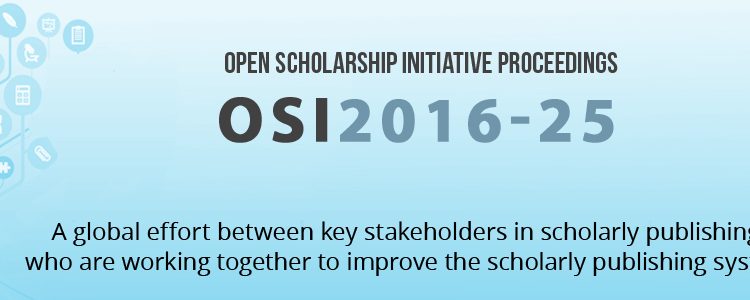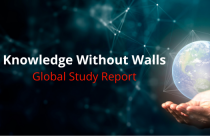Open Scholarship Initiative: Global Enrichment or International Pandemonium?

The world of scholarly publishing has always been fraught with issues of access, authority, politics, and funding. Who has access to academic journals? How are studies and articles selected for publication? What are the politics behind these choices? How do institutions fund their studies and, conversely, how do journals, etc. pay staff and publication costs?
The Open Scholarship Initiative proposes to address some of these issues and to bring the work of researchers and scholars of all disciplines within reach of the international community.
The Open Scholarship Initiative
Managed by the National Science Communication Institute (nSCI) and the United Nations Educational, Scientific, and Cultural Organization (UNESCO), the Open Scholarship Initiative (OSI) has set about answering the following:
- What should the future of scholarly publishing look like?
- How about open access?
- Who should decide?
- Can journals become more affordable and accessible?
- Will journals continue to serve as the primary means of communicating research?
- Can institutional repositories work together more effectively to integrate the world’s knowledge?
The inaugural OSI conference was held in April 2016 and hosted by George Mason University in Fairfax, Virginia, USA. The organization proposes to hold an annual conference through 2025. Participants were C-level representatives from key stakeholder groups in scholarly publishing around the world, representing governments, journal publishing, open access, universities and research institutions, faculty groups, scholarly societies, libraries, research funders, regulatory agencies, public policy groups, STEM education groups, journalism, and more.
The idea for this gathering of scholars began in the field of science where the pressure to publish useful or breakthrough studies was felt more acutely. Universities and other institutions are constantly looking to find acclaim as the home of the latest and greatest solution to some modern problem or disease. More success yields more funding, which is always in short supply and, therefore, a major motivator. Unfortunately, this can lead to hurried or incomplete research in popular areas and neglected research in areas that may lead to long-term, more resilient results.
Some of our respondents said that this vicious competition for funds can influence their work. Funding “affects what we study, what we publish, the risks we (frequently don’t) take,” explains Gary Bennett a neuroscientist at Duke University. It “nudges us to emphasize safe, predictable (read: fundable) science.”
Discussion amongst a group of scientists between October 2014 and January 2015, moderated by the nSCI, which began as the “Open Science Initiative,” resulted in a partnership with UNESCO, thereby broadening both the geographic and scholarly range of inquiry. The Open Scholarship Initiative is the product of this expansion.
Whom Does the OSI Benefit?
Readers
Open access to scholarly articles and studies would be a tremendous benefit to students and researchers world-wide. As it is, universities are cutting back on their funding for scholarly journals, which are essential to the quality and professionalism of student and faculty research. Increased accessibility would also ensure that students and scholars in developing countries would have a depth of resources previously unavailable to them.
Authors
Authors of scholarly work would have increased opportunities to publish and create a community among researchers and writers around the world. Greater access to scholarly articles brings greater recognition to individual authors, which, in turn, brings greater recognition to the institutions they represent. In addition, businesses and companies outside of academia may establish partnerships with these researchers, partnerships that may never have existed without expanded publication. Non-scholarly journals and magazines may also pick up on the work of authors who previously would have been sequestered to the realm of academia, bringing their work into the public sphere. All of this can serve as motivation for authors to publish more and for students to begin a career in professional academic writing.
Institutions
As mentioned above, wider recognition of authors’ work automatically brings wider recognition to the institutions where they work and receive funding. Higher education is expensive and universities work very hard to highlight what is unique and attractive about their brand. Having internationally-recognized, published researchers teaching on campus (or online, as the case may be) is a tremendous recruiting tool. This international recognition may also bring in outside funding, easing the financial burden of the universities and creating potentially long-term partnerships. Alumni are an essential part of keeping universities afloat and of bringing the brand of the university to the world outside of academia. When alumni see their alma mater being acclaimed in a variety of arenas (academic, business, popular media), they are more likely to feel proud of their school and to speak about it with others. Donations may also increase.
Complications
Over the next 10 years, the OSI will have many issues to sort out. While the 2016 conference indicated that all parties show an interest in working together rather than in competition, not all problems will be resolved with consensus. In fact, there is little direction at this point on many issues. Some of these issues are listed below:
- The role of scholarly and scientific societies – How would open access publishing affect the societies that currently rely upon their members and sale of journals for their existence?
- The role of researchers/authors – Would researchers/authors suddenly be afloat, looking for appropriate destinations for their work and for funding?
- Business models – What is the design of this new model? Without any precedent, it will be challenging to design a system that works for and is acceptable to all.
- Morality – All perspectives and cardinal beliefs must be taken into consideration.
- What is OSI trying to achieve, and what comes next? – The Workgroup Questions of OSI2016 are numerous and broad. It may be difficult to narrow the goals or to determine a clear path forward.
The Long Road Ahead
The OSI has projected 10 years of discussions and debate amongst a large and diverse group of professionals before a new system of publishing can be wrangled into existence. As long as they have the same goals in mind—mostly—and maintain a collegial atmosphere and temperament, it is certain that progress will be made. Much of the discussion will likely come down to funding – who will pay for what and how, and authority – who will decide what gets published and how?
Ultimately, increased accessibility to research and research platforms will yield improved knowledge and better scholarship in all disciplines. Business and communication operate on a global network; academia needs to follow suit.
References:
Julia Belluz, Brad Plumer, and Brian Resnick (2016, September 7) The 7 biggest problems facing science, according to 270 scientists. Retrieved from http://www.vox.com/2016/7/14/12016710/science-challeges-research-funding-peer-review-process
Jean-Gabriel Bankier, Promita Chatterji (2016, December) 100 Stories: The Impact of Open Access. Retrieved from https://works.bepress.com/jean_gabriel_bankier/27/









